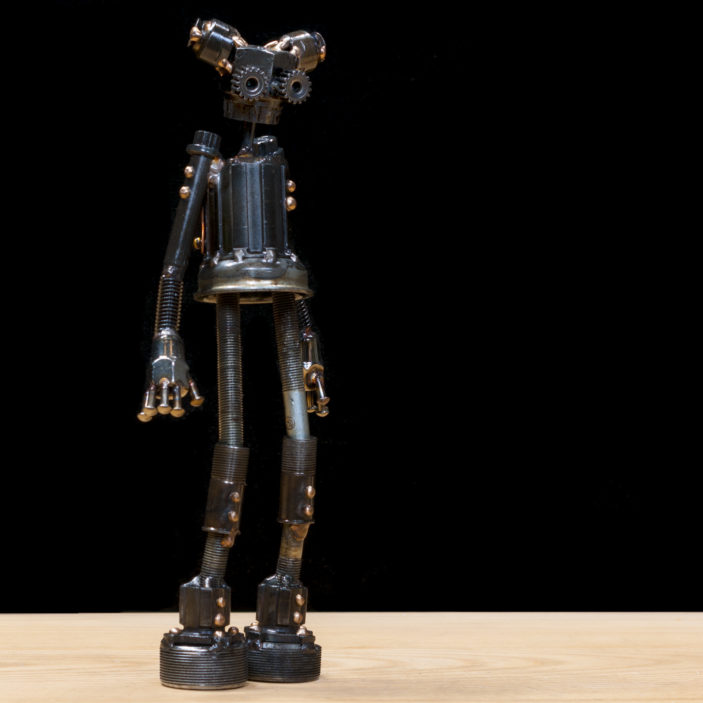I tend to make my Astrobots with long legs and giant, complex and weighty feet to anchor them down. This is what I had intended for Elysa. When it came time to add the feet to the legs something unexpected happened: the axles bottomed out so that they touched the weld bench. This gave Elysa a lower, more centered stance, reminiscent to a kick-boxer. The pieces I were to use as ankles became some sort of iron knee pads.
Elysa had a setback during construction: I had welded her legs at the hips to the inside of the free-hub: often I see if I can allow the Astrobot to swivel. I was nearly done with her when the free-hub twisted a little then refused to budge. I wound up having to remove her legs and re-weld them back to her hips. This is not an easy, since Elysa was designed to stand on two feet. It is very difficult to weld the two feet back together in plane, since I use the weld bench to keep the feet flat as well as balance the Astrobot’s center of gravity as I weld the legs to the feet. Elysa’s feet were welded solidly to her legs already. This means you have to get her legs welded to her hips: a tricky thing to do white balancing her body atop of two legs resting on the bench while sitting on a bucket instead of a stool so you can get the right angle. Plus she’s wearing a solid steel skirt.
As you may have guessed, I wasn’t able to make any of plan A happen. However plan B was a great success! Through the use of a small aluminum plate and some tedious clamping of the feet with Elysa’s head firmly clamped in the bench vise, I was able to perform the surgery with success. Needless to say the patient was completely pain free the entire procedure.
I’m proud of how this little Ion Class Astrobot came out, and I’m glad to have been able to help her recover from her setback.
